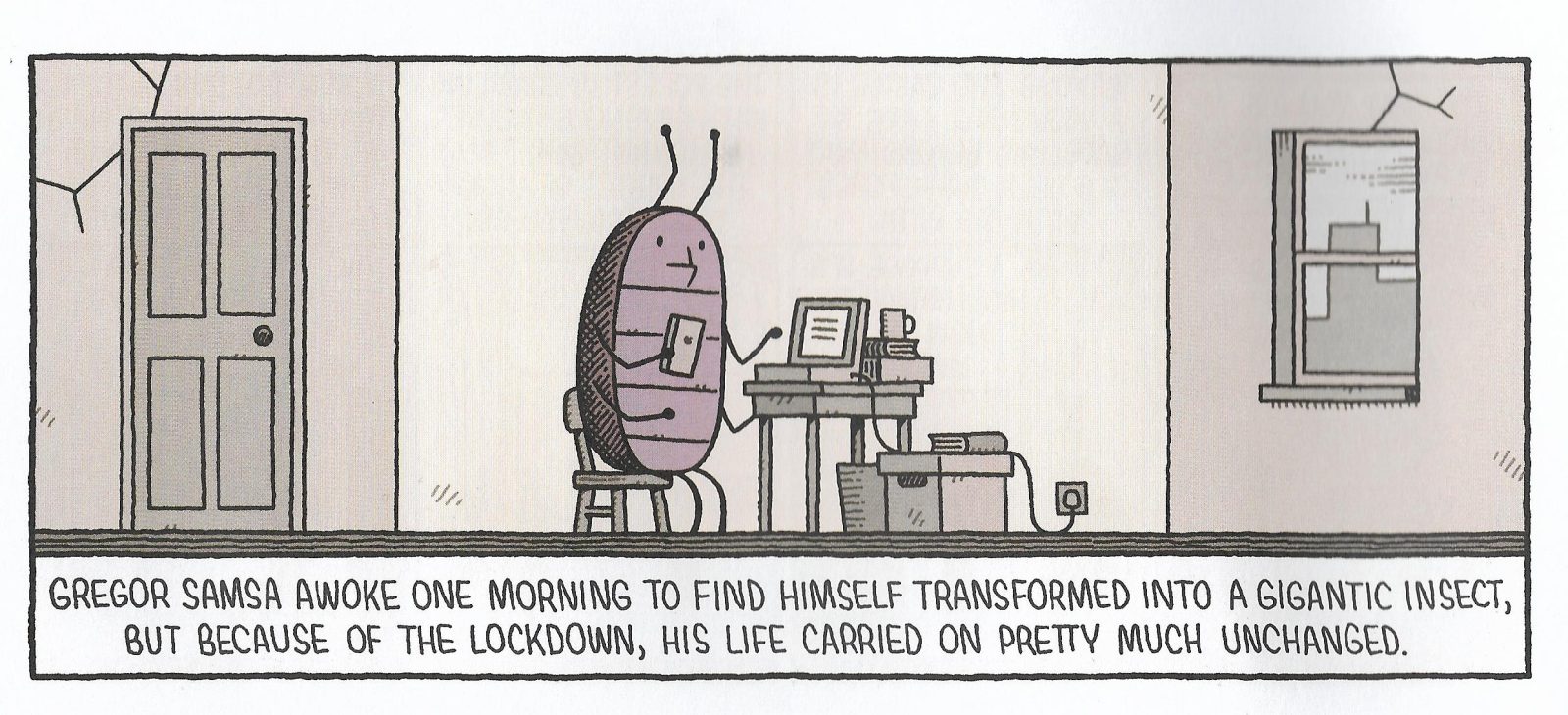For book lovers, there's nothing quite like finding a little gem tucked away in some overlooked corner of a local library or bookshop; it feels like discovering a secret. That thrill of discovery is exactly what the reader feels when they pick up Tom Gauld's Revenge of the Librarians. Its dark orange cloth hardcover and elegant design playfully pops against its surroundings, transporting the reader to a time when books were carefully handcrafted art pieces. No detail has been overlooked in the binding of this book with its gold embossed cover, colorful endpapers and library checkout card. The collection’s 9.5" x 5.5" scale elevates the humble cartoon strip, presenting one per page like a gallery experience. The reader can get up close to Gauld’s meticulous linework, while ample marginal space allows the reader to appreciate each strip fully before moving onto the next.
The clean and appealing design of the book is beautifully matched to Gauld's cartoon aesthetic. A master of the economic line, Gauld's style suggests only as much as the reader needs to know. Through his sparse lines and few panels, Gauld creates science fiction and fantasy epics, scenes of gothic horror and romantic dramas, complex blueprints and schematics, and yes, even scenes of ordinary and mundane life. Gauld’s little silhouette figures are the gateways to his fantastic realms, as wholly immersive vehicles for the reader to inhabit. The crisp and clever wit of each comic is also accessible. Gauld’s gift is his distillation of complex ideas and references into iconic and delightful forays into the absurd. These strips both highlight the universal and overturn the expected by breaking away from and playing with genre conventions. Readers will delight to be in on the joke, even when at times the joke comes at the expense of readers and the reading experience.
In this collection, Gauld uses books and the book industry as vehicles for satirizing the COVID-19 pandemic, juxtaposing the triviality of relentless productivity and accomplishment against the pandemic’s stasis. In Gauld’s strips, readers isolated in gothic castles or down dark holes are unfazed by the outside world so long as they can escape into a good book. Literary classics such as Franz Kafka’s The Metamorphosis are revisited from a pandemic lens, reframing the significance of personal events at a time of global calamity. Throughout the collection, such reframing evokes a nihilistic humor that somehow also reaffirms our collective human experience. In other strips, the terror and uncertainty of the pandemic is gently undermined by shifting the reader’s perspective to that of a blissfully unaware bookshop cat, unaffected by the pandemic’s fraught onset, the following lockdown, and the eventual reopening. Through these collected strips, Gauld deftly upends the reader’s perspective and expectations of normalcy, creating small moments of delight in the mundane, the absurd, and the abnormal.
Gauld also evokes a greater theme of play and games in this collection. Strips like “The Great Book Festival Race”, “Pages from the ‘Game of Thrones Big Book of Fun’” and “Activity Time: Use your experiences of lockdown to write a story” present themselves as more than comic strips or two-dimensional pages. Such strips invite the reader to look at story differently, as a communal act of togetherness and creativity, which also invites the reader into the act of creation through play. Strips like “Review Dice” challenge the very notion of two-dimensionality in comics strips by employing a schematic that can transform the page into a three-dimensional object in the reader’s world. In these ways, Gauld’s strips change and evolve in their form through multiple readings, engaging the readers through play and ultimately transforming them from readers into players. Revenge of the Librarians suggests that creative play is essential to navigating the mundaneness and dreariness that can encumber everyday life, encouraging the reader to include play in their lives through the end of the book and beyond.










